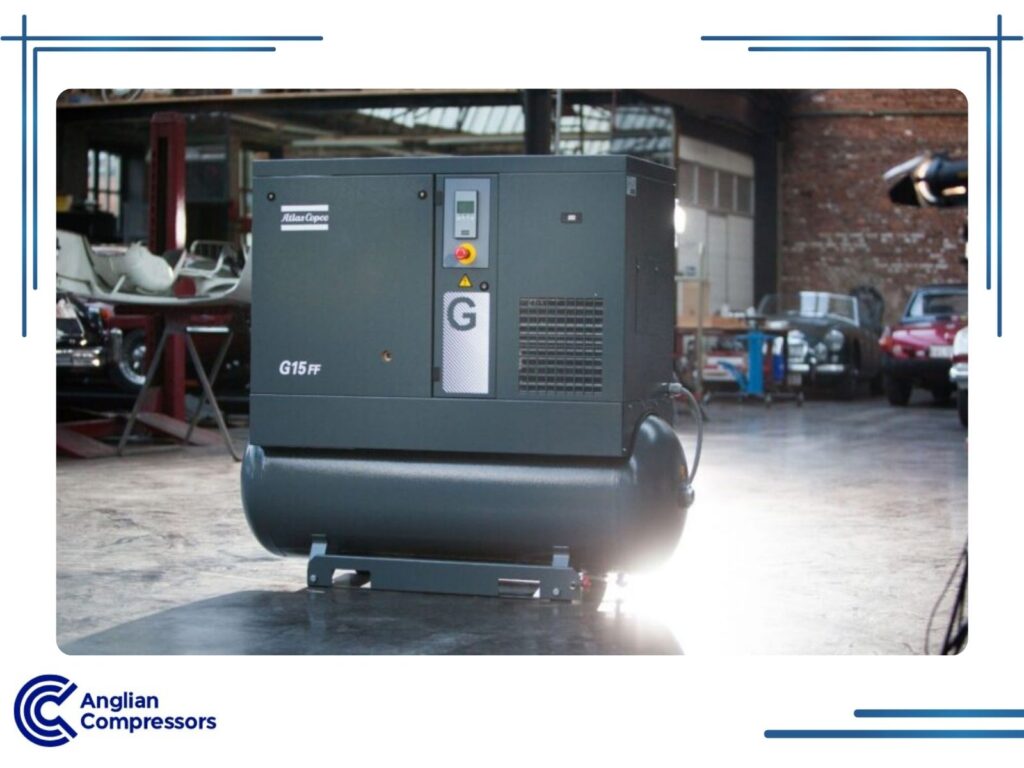What air treatment equipment is recommended for industrial compressors?
Ensuring the quality of compressed air in industrial settings is no trivial matter. As air compressors compress ambient air, unwanted elements like dust, dirt, and oil are also concentrated, necessitating their removal to varying degrees, depending on the end use of the compressed air.
Inadequately cleaned compressed air can hinder manufacturing processes and affect the efficiency of air-fed equipment. This post delves into the heart of this matter, discussing the equipment recommended for air treatment in the context of industrial compressors.
Table of Contents
Types of Compressed Air Treatment in an Industrial Setting
Industrial air compressors are almost always an oil-injected compressor (which benefits from added filtration) or an oil-free compressor.
These types of industrial air compressors are treated and cleaned in two ways: filtration or drying. Most of the time, companies will use both methods to ensure high air quality standards and better efficiency for their machines.
UK ISO Standards for Compressed Air
The goal of air treatment is to keep your compressed air at the UK ISO standards.
The ISO-8573-1 standard provides specifics on compressed air purity classes, in respect of oil, water (or vapour), and particulate matter (dust, dirt, etc.).
Overall, your air quality depends on your need and purpose for using compressed air, what classification is applicable to your industry, and what air treatment equipment required to achieve and maintain that standard.
Oil-free Compressors vs Oil-injected Compressors for Clean Air
Returning to the subject of compressed air classes for a moment, these are relevant for UK businesses because needs must match purpose.
Compressed air used in a food factory, big pharma, or electronics production is cleaner and requires cleaner air systems. Other uses for compressed air don’t need to be as clean, which opens up the choices for cheaper compressed air systems.
Oil-free Compressors
Specific industries that need high air purity can only rely on compressed air that’s free from oil vapour or other forms of oil-based contaminants.
To be efficient without oil, the compressor element is treated with coating, like teflon, ceramic, or metal . It does make the oil-free compressor considerably more expensive than an oil-injected compressor, which also requires additional air filters.
Oil-free compressors use a particulate filter, but an oil coalescing filter is most often not required. The particulate filter is unavoidable – it removes particulate and dust from the input of ambient air. Fewer filters help avoid as many potential reductions in air pressure as possible.
Oil-injected Compressors
Oil-injected compressors are far more common in facilities requiring compressor air systems. Their affordability from a capital investment standpoint sets them apart.
Oil is added as a lubricant, sealant, and to assist with cooling too. Here, both a particulate filter and an oil coalescing filter are required as air treatments. Multiple filters do reduce the air pressure levels for an oil-injected compressor, sometimes requiring higher pressure settings to compensate for it, adding to energy costs.
Furthermore, oil condensate management is required to remove oil from wastewater, making it possible and legal to dispose of into a foul drain. A UK trade effluent consent authorisation is needed for this.
With proper filtration and other systems applied, it may reduce oil contaminants to 0.01 of a micron. This is sufficient for many compressed air uses. Below this contaminant level, or to remove hydrocarbon vapours, carbon filters are effective.
Of course, additional pressure drops might occur with additional filters, and this may reduce compressed air quality. Ultimately, it’s a trade-off.
Dryers to Remove Moisture from Compressed Air
Moisture is one of the biggest contaminants in compressed air systems. These vapours are made from water, oil, and microorganisms.
Water within compressed air is especially dangerous because it damages pneumatic tools when water levels are excessive. Also, in some other scenarios, the driest air is required to complete the manufacturing processes.
Air compressors include a centrifugal process – or other approaches to moisture separation – to extract droplets from the air. While it works well, it does not remove all H2O. Dryers are needed to remove the remaining moisture from compressed air.
Air dryers fall into two types — Refrigerated Dryers and DesiccantDryers:
Refrigerated Dryers
Refrigerated dryers are lower cost, perform well, and are the most common.
This type of dryer uses a refrigerant – like a fridge – to chill the air. The refrigerant dryer causes water vapour to become liquified and the water removed through the drainage system.
There are limitations to this dryer type. Only dewpoints at or above +3°C are valid for the dryer to operate. Furthermore, when temperatures reach near the freezing point, there is a significant risk of frozen pipes and the refrigerant not working as expected. Therefore, locations that drop steeply in temperature during certain seasons might find a refrigerant dryer less than optimal.
Desiccant Dryers
Desiccant dryers are more adaptable. However, the capital investment is far more than for refrigerated dryers.
These dryers use desiccant media beds to collect and remove H2O molecules. The desiccant is used to cleverly attract water molecules from the air. The materials used include silica gel, activated alumina, among other types.
Pressure dewpoints reaching down to minus 70°C are possible by using regenerative dryers. Found mainly within UK industries that either need to operate outdoors or in varied, somewhat extreme temperatures, regenerative dryers have their place.
The downsides to regenerative dryers are several. They use two beds – one that’s drying, and the other regenerates by removing collected water molecules. As a result, it reduces its capacity and consumes generated compressed air as part of its operation.
Lastly, blowers and heaters are further options to remove water from compressed air. This is done at the expense of additional capital investment and higher energy requirements.

Conclusion
In conclusion, maintaining clean, dry air in industrial compressor systems is crucial. It’s not just about the equipment itself – it’s about protecting your entire operation. Investing in the right air treatment equipment leads to real benefits:
- Lower Costs: Fewer repairs, less downtime, and longer lifespan for your machinery.
- Better Products: Consistent air quality means your products are made to a higher standard.
- Energy Savings: Efficient systems use less power, which saves you money over time.
If you’re unsure if your current air treatment setup is doing its job, it’s worth having an expert take a look. At Anglian Compressors, we’re the compressed air experts. We can assess your system and recommend the perfect solution to keep your operation running smoothly. Contact our friendly team today – we’re here to help! You can reach us by phone, email, or through our website.


